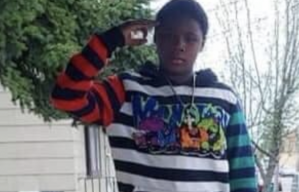After being legally blind for his entire life, fifth grader Christopher Ward, Jr. got a chance to see the world - and his mother - for the first time ever using electronic glasses. The new wearable technology is called eSight, and after traveling to Washington, D.C. from Forest, Va., the 12-year-old got a chance to try it on his own.
eSight is a hands-free headset that possesses a small, high-speed camera that can capture live video that is then sent to an LED screen in front of the user's eyes, give them an amazing level of visual clarity. For Marquita Hackley, Ward's mother, the device gave her son the opportunity to see her for the first time in 12 years, an experience that she called "overwhelming and exciting."
"The very first thing he did was turn to me and say, 'Oh, Mommy! There you are!" Hackley said. "And then to hear him say, 'I saw my mom, and she was very pretty,' was so heartwarming. And aside from pretty, just the fact he could even see me meant the whole world to me."
Ward was born with optic nerve hypoplasia, which stems from an underdevelopment in the optic nerve that decreases light perception in his right eye drastically and causes very low vision in his right eye.
"Something has to be up in his face, almost touching for him to see it," she said. "And even though Ward wears glasses on a daily basis, they're more for protection than vision because there is a strong possibility he could lose the little sight he does have if were to get hurt or hit on the face."
Despite their promise, eSight glasses won't work for 14 percent of the world's sight-impaired population, those completely blind or severely sight-impaired. However, for those who are legally blind and with low vision, they can help users see the world again.
One pair of eSight glasses costs $15,000, although the company does offer free demos, as they did with Ward.
"Whatever it takes to raise the money for it, that's what I was determined I was going to do," Hackley said.








